ASUS Crosshair V Formula ‘Bulldozer’ Motherboard Review
ASUS Crosshair V Formula Overclocking
Overclocking greatly varies due to what hardware is being used and
who is doing the overclocking. Always remember that no two pieces of
hardware will perform the same, so our results will differ from what you
might be able to get.

AMD said that you should be able to hit 4.6GHz on the AMD retail boxed CPU cooler and 4.9GHz on all of the cores. To try this out we gave it a shot was used for
overclocking, so we’d expect this overclock to be easily reached by anyone!
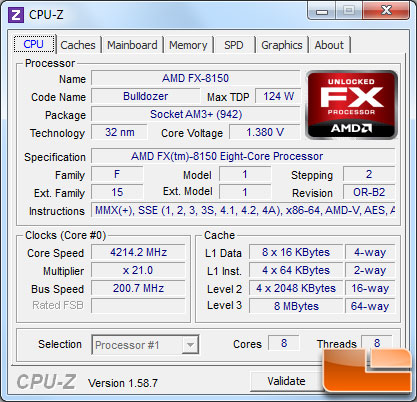
The AMD FX-8150 starts off at 4200MHz in ‘CPU Max Turbo’ mode, so it should be that hard to get to 4.6GHz or 4.9Ghz right? The FX-8150 starts off with a base clock of 200MHz
with a multiplier of 21. All AMD FX series processors feature an unlocked multiplier, so you can both lower and raise the multiplier in the BIOS. You can also adjust the base clock frequency to better dial in the overclock. Since we were time limited we overclocked by just using the multiplier to see how far we could push our processor.
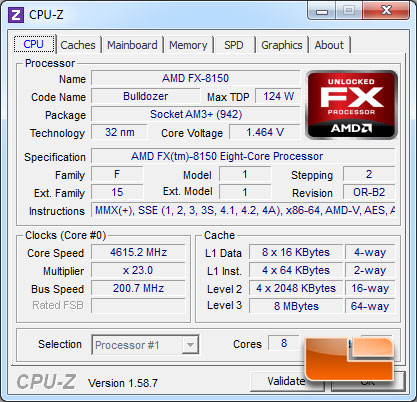
With all eight cores enable on the AMD FX-8150, we were only able to increase the multiplier to x23. Running at 4.6GHz the system was rock solid. When we tried to increase the multiplier to x23.5 the system wouldn’t complete POST. We tried increasing the voltage to 1.55 as well as a few other options and nothing seemed to help. We decided to disable all but the first module of cores and see if we were able to get past the x23 multiplier. Immediately we were able to boot into Windows 7 at the x23.5 multiplier, we then began enabling the cores and found that anything past four cores wouldn’t post at these multipliers.
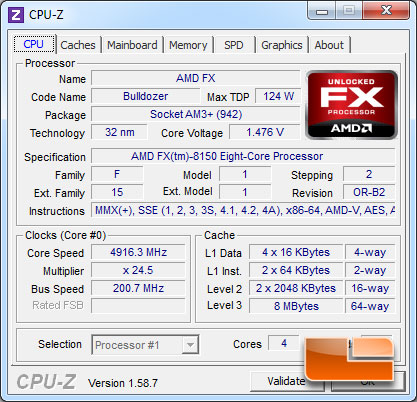
Running on only four cores we were able to increase the multiplier to x24.5. This gave us a final overclock of 4916MHz. Overall not a bad overclock, though I would have been much happier of this particular piece of silicone was stable across all eight cores. Though that’s not an issue with the ASUS Crosshair V Formula. It’s more of an issue with our AMD FX-8150, though we can’t fault AMD. After all, it runs at the rated speeds just fine.
ASUS Crosshair V Formula Overclocking with the AMD Phenom II X6 1100T
While playing with the new AMD FX-8150, we determined that our specific piece of silicon doesn’t overclock as well as one would hope. In order to see what the ASUS Crosshair V Formula can do, we decided to fire up the board with our Phenom II X6 1100T.
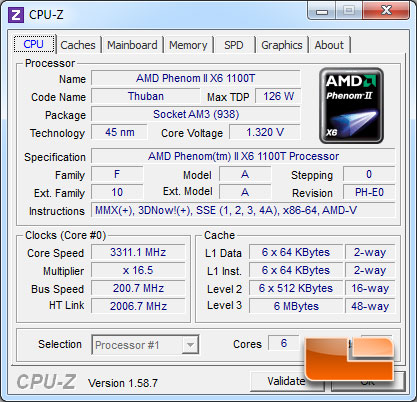
The AMD Phenom II X6 1100T is a Black Edition processor. This gives us the ability to increase both the Bclk and the processor multiplier. The Phenom II X6 1100T uses a Bclk of 200MHz and a base multiplier of 16.5 to reach the final core speed of 3300MHz.
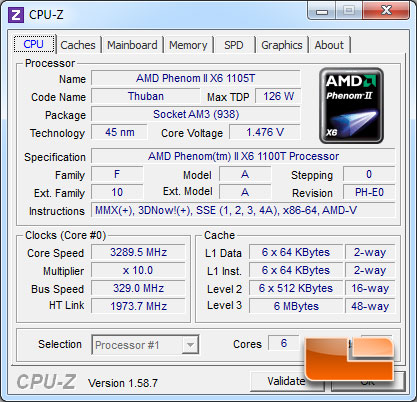
We started out seeing how far we could simply push the Bclk on the ASUS Crosshair V Formula. With a glint of hope in our eyes we jumped from the starting point of 200MHz, all the way to 320MHz in one shot. We decided to tweak the voltage to 1.45 right away, since we’ve done this a few times. With a little bit of trial and error we were able to narrow down the highest Bclk that was stable at 329MHz. That’s nearly a 65% jump over stock.

In multiple attempts across multiple motherboards the maximum we have been able to push our Phenom II X6 1100T to is 4.3GHz plus or minus a few MHz. The ASUS ROG Crosshair V Formula was able to meet the challenge and run with the best of them hitting 4314MHz.

Comments are closed.